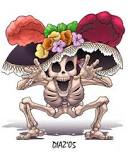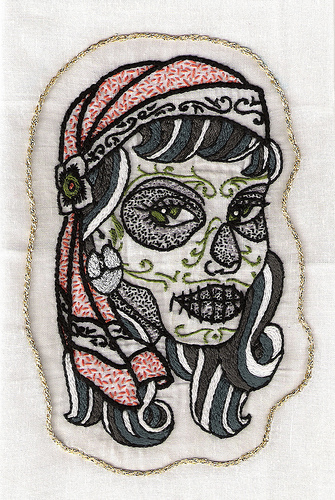THE DAY OF THE DEAD
Day of the Dead: Is a Mexican holiday celebrated throughout Mexico and around the world in other cultures. The holiday focuses on gatherings of family and friends to pray for and remember friends and family members who have died. It is particularly celebrated in Mexico, where it is a national holiday, and all banks are closed. The celebration takes place on November 1, in connection with the Catholic holidays of All Saint´s Day and All Souls Day (November 2). Traditions connected with the holiday include building private altars honoring the deceased using sugar skulls, marigolds, and the favorite foods and beverages of the departed and visiting graves with these as gifts. They also leave possessions of the deceased.
Scholars trace the origins of the modern Mexican holiday to indigenous observances dating back hundreds of years and to an Aztec festival dedicated to the goddess Mictecacihuatl.

Beliefs: People go to cemeteries to be with the souls of the departed and build private altars containing the favorite foods and beverages, as well as photos and memorabilia, of the departed. The intent is to encourage visits by the souls, so the souls will hear the prayers and the comments of the living directed to them. Celebrations can take a humorous tone, as celebrants remember funny events and anecdotes about the departed.
Plans for the day are made throughout the year, including gathering the goods to be offered to the dead. During the three-day period, families usually clean and decorate graves; most visit the cemeteries where their loved ones are buried and decorate their graves with ofrendas(offerings), which often include orange Mexican marigolds called cempasúchil.
In modern Mexico, this name is sometimes replaced with the term Flor de Muerto (Flower of the Dead). These flowers are thought to attract souls of the dead to the offerings.
Toys are brought for dead children, and bottles of tequila, mescal or pulque or jars of atole for adults. Families will also offer trinkets or the deceased's favorite candies on the grave. “Ofrendas” are also put in homes, usually with foods such as candied pumpkin, “pan de muerto” ("bread of the dead"), and sugar skulls and beverages such as atole. The “ofrendas” are left out in the homes as a welcoming gesture for the deceased. Some people believe the spirits of the dead eat the "spiritual essence" of the “ofrendas” food, so though the celebrators eat the food after the festivities, they believe it lacks nutritional value. Pillows and blankets are left out so the deceased can rest after their long journey. In some parts of Mexico people spend all night beside the graves of their relatives. In many places, people have picnics at the grave site, as well.



